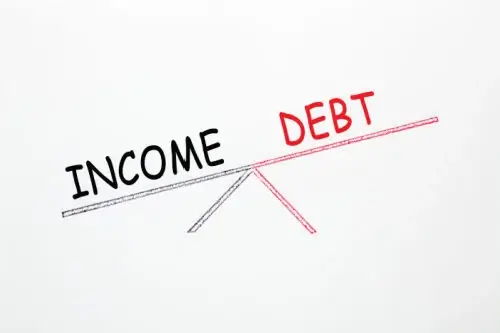
When you are ready to buy a home, you may hear your mortgage lender start talking about your debt-to-income ratio, or DTI. While you may not have heard that term before, it is actually a very important number when it comes to figuring out if you can qualify for a home loan and how much home you can afford.
Debt-to-Income Ratio Defined
Your DTI is how much debt you have divided by your income. This gives your lender a helpful percentage to gauge how much of your financial resources are tied up in debts. The lower your DTI, the better, as it indicates that you have few debts compared to how much you bring in, and therefore you are more likely to be able to make your mortgage payment each month.
How to Calculate DTI
To calculate your debt-to-income ratio, add all your monthly debt obligations. Divide that number by your total gross household income. Then multiple the result by 100 to turn it into a percentage. For example, if you have a total of $1,800 in monthly debts and you gross $6,000 in monthly income, you would divide $1,800 by $6,000. That equals 0.3. Multiply that by 100 and you get a DTI of 30%.
What Counts as Debt?
Lenders will include all of the following in their calculations:
- Rent or mortgage payment
- Car loan payments
- Student loan payments
- Credit card bills
- Personal loans
- Any child support or alimony
- Any HOA fees
They will NOT typically add in the following to your debt category:
- Utility costs
- Health insurance premiums
- Gas costs and car maintenance charges
- Savings account or retirement account contributions
- Entertainment, food, and clothing expenses
What Are the Maximum DTI Requirements for a Mortgage?
Mortgage lenders use two different DTI ratios to judge your fitness to take on a home loan. The first is the front-end ratio. This includes only housing related costs in your debt calculations. This means only your future monthly mortgage principal, interest, property taxes, homeowners’ insurance, and any HOA fees are factored in.
There is also a back-end ratio. This takes into account your total debt obligations, both housing related and non-housing related including but not limited to: monthly student loan payments, car payments, monthly minimum credit card payments, etc. This provides lenders a more complete look at what your financial picture would be like with the proposed mortgage. Lenders typically view borrowers with good credit and a low Debt-to-Income ratio as less of a risk of default than a borrower with poor credit and/or a high Debt-to-Income ratio.
How to Lower Your DTI
The lower your DTI, the more likely you are to be approved for a home loan. If you have a high debt-to-income ratio currently, you can bring it down by trying to pay off your smallest debts and clearing those off the credit record.
You could also try coming at your ratio from the other side; you could increase your income, either by getting a higher paying job or by taking on a side gig for a while. Keep in mind that lenders like to see at least two years’ worth of income proof for it to be considered stable.
If you really want a house now but can’t bring down your DTI fast enough, you could consider asking a family member or friend to go in on the loan with you if they have a better debt profile. Lenders will calculate the loan DTI based on both of your debts and incomes. Their lower DTI can help average out your high one and help you qualify for a mortgage.
If you have any questions regarding your financial situation and your ability to qualify for a loan - give us a call today! In just a few minutes, we can generally give you a very good idea of what loans and loan amounts that you can qualify for.
